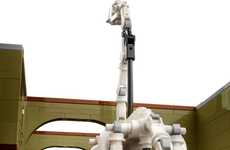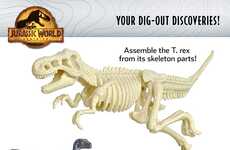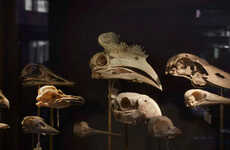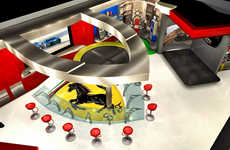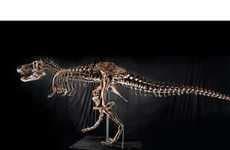
Surprise Discovery at La Brea Tar Pits Yields 700 New Fossils
Marissa Brassfield — February 20, 2009 — Unique
References: nytimes & uk.reuters
The Page Museum, housed next to the La Brea Tar Pits, already possesses the world's largest collection of Ice Age fossils, but a massive find this morning has doubled its holdings.
A nearly-intact mammoth skeleton was discovered in a construction zone that once was a department store parking garage near the La Brea Tar Pits. Researchers believe the mammoth to have died at the age of 40 about 40,000 years ago; over 80% of his skeleton was recovered.
In addition to the mammoth skeleton, hundreds of other bones and fossils from the prehistoric era were recovered at the La Brea Tar Pits site, for a grand total of about 700 specimens.
A nearly-intact mammoth skeleton was discovered in a construction zone that once was a department store parking garage near the La Brea Tar Pits. Researchers believe the mammoth to have died at the age of 40 about 40,000 years ago; over 80% of his skeleton was recovered.
In addition to the mammoth skeleton, hundreds of other bones and fossils from the prehistoric era were recovered at the La Brea Tar Pits site, for a grand total of about 700 specimens.
Trend Themes
1. Ice Age Fossils - The massive find at the La Brea Tar Pits presents an opportunity for scientists and researchers to study and learn more about the prehistoric era.
2. Archaeological Discoveries - Excavating parking lots and construction zones could lead to unexpected and significant archaeological discoveries, providing valuable insights into the past.
3. Scientific Research - The discovery of 700 new fossils at the La Brea Tar Pits site fuels scientific research in paleontology and contributes to our understanding of ancient ecosystems.
Industry Implications
1. Museum and Exhibition - The Page Museum can leverage the expansion of their Ice Age fossil collection to attract more visitors and enhance educational experiences.
2. Construction - Excavation projects present an opportunity for construction companies to collaborate with archaeologists and paleontologists, ensuring the protection and preservation of significant archaeological finds.
3. Education and Research - Educational institutions can use these archaeological discoveries as a means to engage students in scientific research and studies related to paleontology and the prehistoric era.
5
Score
Popularity
Activity
Freshness


